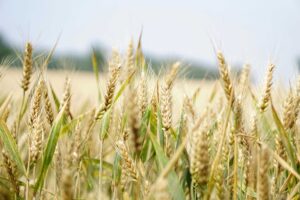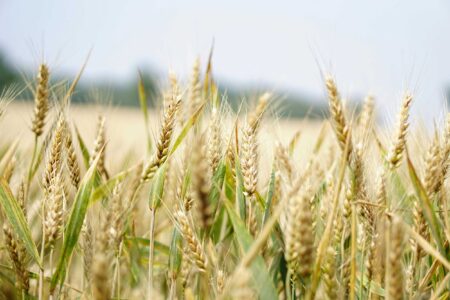Variable frequency drives (VFDs) take single phase or three phase power and output a three-phase variable voltage and frequency. There are many instances where agriculture can benefit from this technology.
“With a VFD, you can ramp up a motor’s speed slowly or vary the speed,” said Ben Strong, Mitsubishi Electric Automation industry marketing manager. “For instance, if you have a centrifugal pump it may consume less energy at 56 hertz instead of the 60 hertz we get from the power lines. With a VFD we can have more control over the energy we use.”
When a motor starts on AC power directly across the line, it instantly goes from zero to 60 hertz, which Strong called “relatively violent.” This also draws a great deal of power while the motor is accelerating . With a VFD, the speed can be ramped up or down in a controlled manner, which uses less energy and has less wear and tear on the mechanical systems.
How Do VFDs Work?
Put simply, VFDs control the RPMs of a motor by adjusting the frequency and voltage supplied to the motor. Using diodes, three-phase AC power is converted to DC, filtered through a capacitor, and then converted back into AC via insulated-gate bipolar resistors (IGBTs). The IGBTs allow for precise motor speed control.
“When you can vary the speed, slowing down a motor instead of stopping completely, you minimize the number of starts and save energy,” Strong said. “You can also use VFDs to give a warning when a motor is operating outside the expected range of operation.”
For example, a VFD on a pump allows a ramped-up start which can give a warning of a jam that can be corrected before more damage is done.
What’s the Benefit for Agriculture?
The ability to vary motor speed and ramp up energy use based on application is the greatest benefit of using a VFD. Irrigation pumps, vacuums, fans, grain drying systems, conveyor belts, and even horse walking devices can all be controlled with VFDs.
“When you start a pump across the line, a common way to vary the flow rate is to throttle the output,” Strong said. “This increases the energy consumption of the pump while delivering less water or whatever you’re pumping. A VFD can vary the flowrate by controlling the motor speed, resulting in less wasted energy.”
Another benefit of VFDs is their ability to withstand harsh conditions — cold or hot temperatures, exposure to chemicals, and even seismic events.
“I grew up in northern Minnesota, and I know how cold it can get,” Strong said. “Things that work at minus-20°F don’t always work at minus-40, and a lot of farming happens in places that can get that cold. This technology has been designed for those extremes.”
Agriculture also has a variety of materials, from manure to fertilizers, which generate corrosive gases. Most VFDs are manufactured to resist the effects of corrosive gases.
“The point is, VFDs are designed for harsh environments, like what we encounter in agriculture,” he added.
In remote applications, VFDs guard against under or over voltage, phase loss, drive overload, and short circuits, ensuring safe and stable operation.
Other Incentives
VFDs are relatively inexpensive, and some electric providers offer rebates or discounts for their use. While there is no central location to view all states’ offers, contacting your local energy provider should provide answers about available incentives in your area.
“Depending on rebates available from your energy company, you may be able to make the return on investment on a VFD in three to six months, depending on the application,” Strong said.


:max_bytes(150000):strip_icc()/Farmall_Utilty_120C_L635_1397_01-25copy-8c778723dcab4769b9f384a4309c201a.jpg)
:max_bytes(150000):strip_icc()/44467609092_de0dd33a28_o-ea570461a64240d9bdad9717b3374b48.jpg)



:max_bytes(150000):strip_icc()/IrrigationCornField-WideShot-2000-35038e41c99a4ff0924ac482c211ac2d.jpg)

:max_bytes(150000):strip_icc()/Markets-2-Storm-candlestick-up-9-4bd8982c0a6b4c0e9e01a0d2bcb070ed.jpeg)
:max_bytes(150000):strip_icc()/Solix_Horizontal-9887bea565a048d88cdb7f658e757827.jpeg)
:max_bytes(150000):strip_icc()/54673504072_63b6d5500a_o-a07f17332d2e4bce8a229a525e60579b.jpeg)